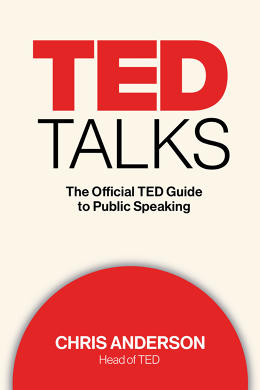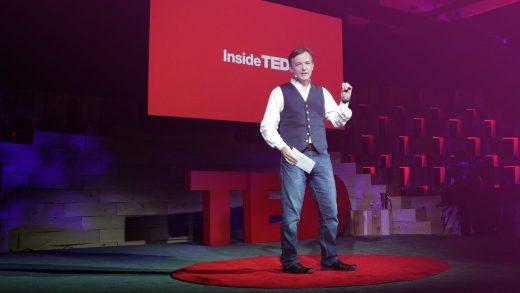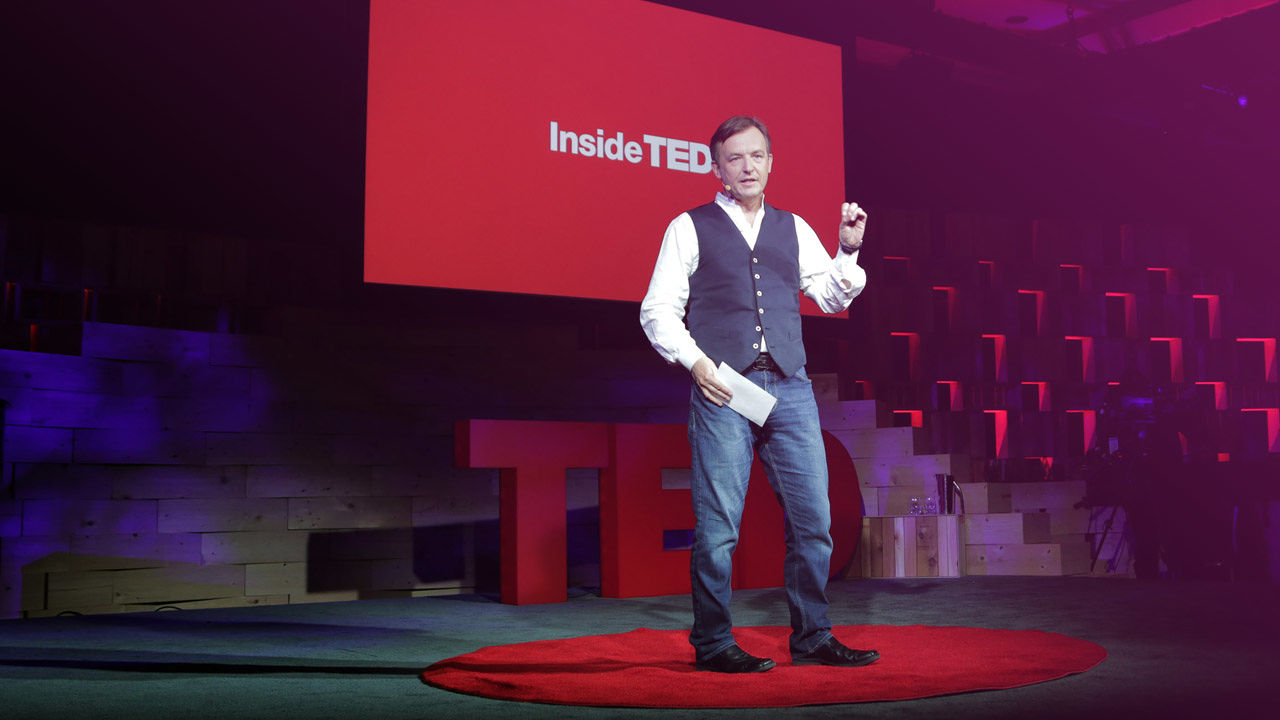Let The Head Of TED Show You How To End Your Speech With Power
If you’ve held people’s attention through your talk, don’t ruin it with a flat ending.
As Danny Kahneman explained so powerfully, both in his book Thinking, Fast and Slow and TED Talk, how people remember an event may be very different from how they experienced it, and when it comes to remembering, your final experience is really important.

If the ending isn’t memorable, the talk itself may not be. Here’s how not to end:
“Well, that’s my time gone, so I’ll wrap up there.” (You mean, you had a lot more to say but can’t tell us because of bad planning?)
“Finally, I just want to thank my awesome team, who are pictured here: David, Joanna, Gavin, Samantha, Lee, Abdul, and Hezekiah. Also, my university, and my sponsors.” (Lovely, but do you care about them more than your idea, and more than us, your audience?!)
“So, given the importance of this issue, I hope we can start a new conversation about it together.” (A conversation?! Isn’t that a little lame? What should be the outcome of that conversation?)
“The future is full of challenges and opportunities. Everyone here has it in their heart to make a difference. Let’s dream together. Let’s be the change we want to see in the world.” (Beautiful sentiment, but the clichés really don’t help anyone.)
“I’ll close with this video which summarizes my points.” (No! Never end with a video. End with you!)
“So that concludes my argument, now are there any questions?” (Or, how to preempt your own applause.)
“I’m sorry I haven’t had time to discuss some of the major issues here, but hopefully this has at least given you a flavor of the topic.” (Don’t apologize! Plan more carefully! Your job was to give the best talk you could in the time available.)
“In closing, I should just point out that my organization could probably solve this problem if we were adequately funded. You have it in your power to change the world with us.” (Ah, so this was a fundraising pitch all along?)
“Thanks for being such an amazing audience. I have loved every moment, standing here, talking to you. I’ll carry this experience with me for a long, long time. You’ve been so patient, and I know that you’ll take what you’ve heard today and do something wonderful with it.” (“Thank you” would have been just fine.)
It’s amazing how many talks simply fizzle out—and how many more go through a series of false endings, as if the speaker can’t bear to leave the stage.
Unless you plan your ending carefully, you may well find yourself adding paragraph after paragraph: “Finally, the key point, as I said . . . So, in conclusion . . . And just to emphasize again, the reason this matters . . . And of course it’s important to still bear in mind . . . Oh, and one last thing . . .”
It’s exhausting. And it will damage the talk’s impact. Here are three better ways to end.
1. Camera Pull-Back
You’ve spent the talk explaining a particular piece of work. At the end, why not show us the bigger picture, a broader set of possibilities implied by your work?
David Eagleman showed that the human brain could be thought of as a pattern recognizer, and that if you were to connect new electrical data to a brain, it could come to interpret that data as if coming from a brand-new sense organ—so that you could intuitively sense brand-new aspects of the world in real time. He ended by hinting at the limitless possibilities this brought with it:
Just imagine an astronaut being able to feel the overall health of the International Space Station, or, for that matter, having you feel the invisible states of your own health, like your blood sugar and the state of your microbiome, or having 360-degree vision or seeing in infrared or ultraviolet.
So the key is this: As we move into the future, we’re going to increasingly be able to choose our own peripheral devices. We no longer have to wait for Mother Nature’s sensory gifts on her timescales, but instead, like any good parent, she’s given us the tools that we need to go out and define our own trajectory. So the question now is, how do you want to go out and experience your universe?
2. Call To Action
If you’ve given your audience a powerful idea, why not end by nudging them to act on it?
Harvard Business School professor Amy Cuddy concluded her talk on power posing by inviting people to try it in their own lives, and to pass it on to others:
Give it away. Share it with people, because the people who can use it the most are the ones with no resources and no technology and no status and no power. Give it to them because they can do it in private. They need their bodies, privacy, and two minutes, and it can significantly change the outcomes of their life.
In his talk on public shaming, author Jon Ronson’s final call to action was admirably succinct:
The great thing about social media was how it gave a voice to voiceless people, but we’re now creating a surveillance society, where the smartest way to survive is to go back to being voiceless. Let’s not do that.
3. Personal Commitment
It’s one thing to call on the audience to act, but sometimes speakers score by making a giant commitment of their own. The most dramatic example of this at TED was when Bill Stone spoke of the possibilities of humans returning to the moon, and his conviction that an expedition could create a massive new industry and open up space exploration for a new generation. Then he said this:
I would like to close here by putting a stake in the sand at TED. I intend to lead that expedition.
A personal commitment like that can be incredibly compelling.
In 2011, the swimmer Diana Nyad gave a TED Talk in which she described how she had tried to do what no one had ever achieved—to swim from Cuba to Florida. She had tried on three occasions, sometimes persisting for 50 hours of constant swimming, braving dangerous currents and near-lethal jellyfish stings, but ultimately failing. At the end of her talk she electrified the audience by saying this:
That ocean’s still there. This hope is still alive. And I don’t want to be the crazy woman who does it for years and years and years, and tries and fails and tries and fails and tries and fails . . . I can swim from Cuba to Florida, and I will swim from Cuba to Florida.
And sure enough, two years later she returned to the TED stage to describe how, at age 64, she had finally done it.
As with everything, making a major commitment requires judgment. Done wrong, it could lead to awkwardness in the moment, and a loss of credibility later. But if you’re passionate about turning an idea into action, it may well be worth stepping up to.
This article is adapted from TED Talks: The Official TED Guide to Public Speaking © 2016 by Chris Anderson. Reproduced by permission of Houghton Mifflin Harcourt. All rights reserved.
Fast Company , Read Full Story
(38)














